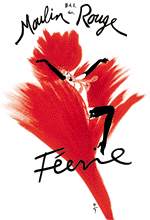Of War and Poulet: Part 2

- SUBSCRIBE
- ALREADY SUBSCRIBED?
BECOME A BONJOUR PARIS MEMBER
Gain full access to our collection of over 5,000 articles and bring the City of Light into your life. Just 60 USD per year.
Find out why you should become a member here.
Sign in
Fill in your credentials below.
As explained in Part One, in the spring of 1800, Napoleon, newly designated as First Consul, had undertaken an invasion of Austrian territory in Italy by the difficult means of crossing the Alps. Almost defeated, he had managed late in the day to emerge victorious in the Battle of Marengo, thanks to the heroic and resourceful actions of his general, Louis Desaix.
But his general was not the only one who demonstrated heroic and resourceful actions at Marengo—some credit must also be given to Napoleon’s beleaguered chef for those same qualities. Like his boss, Chef Dunand was not having a good day for much of that momentous occasion in June. He was, of course, expected to produce wonderful meals under any circumstances—sort of the way American wives and mothers are expected to produce feasts at Thanksgiving and during the Christmas season, no matter HOW many packages still have to be wrapped. But, dare I say it, poor Dunand’s situation was even more dire than the American cook’s might be. In short, he had nothing to cook. Oh, yes, and he had nothing to cook with, either.
The problem was that Napoleon, who had lost badly early in the day, naturally waxed very enthusiastic when reinforcements had arrived later, and went chasing vigorously after the enemy. Dunand did his best to keep up, but alas, the commissary, with all the food and all the equipment, fell behind. This meant real trouble, because the General rarely ate before a battle but always demanded to be served immediately when he returned victorious.
What to do, what to do? Dunand, desperate, grabbed a few soldiers and sent them out to forage. "Bring back anything, anything," he shouted at them. "And confiscate a frying pan, too." As it turned out, there was not much to be had. The expedition returned with one chicken (described as “scrawny”), a few eggs, four tomatoes, a small number of crawfish, a bit of garlic, a small amount of olive oil (no butter to be found)—and a  frying pan. It did not look promising.
frying pan. It did not look promising.
But at least it was something, and Dunand refused to give up. He grabbed a saber and whacked on the chicken until he had some sort of pieces, even if not in the usual shape. Heating the oil in the pan, he browned the chicken in the oil and crushed garlic, along with watered cognac that he surreptitiously slipped out of Napoleon’s own private supply. He then fried the eggs and the crawfish in the same liquid, finished the chicken, and confiscated some of the soldiers’ emergency ration of bread. He piled the eggs and the crawfish on top of the chicken and poured over what he could scrape from the pan. Don’t ask where he got a plate.
This was an unorthodox dish, to say the least. Chicken with crawfish was not a normal combination, not to mention the lack of butter. Dunand waited, trembling, for Napoleon’s reaction. After three or four bites, Napoleon, who was already in a good mood because the battle had turned from disaster to victory, pronounced the dish wonderful and ordered the chef to serve the same thing after every battle!
Later, Dunand tried varying the dish by leaving out the crawfish and using wine instead of cognac, but Napoleon would have none of it. He had become superstitious about what he regarded as the felicitous combination of chicken and crawfish in the dish, and was firm that he associated that duo with victory. Today, the crawfish is left out by most French cooks, but in the area of Marengo the traditional combination is usually offered, largely for historical reasons. Every once in a while, Piedmontese cooks add some white truffles, which Dunand’s foragers did not manage to find.
So there were two heroes connected with the Battle of Marengo, one military and one culinary. Napoleon paid great honor to Desaix by erecting monuments to the general on Place Dauphine and Place des Victoires, and by inscribing his name on the face of the Arc de Triomphe. And of course Chef Dunand is commemorated in the famous dish he created, Chicken Marengo.
Chicken Marengo
There are several variations of this dish, but this is a typical recipe.
1 chicken, cut into pieces (use of saber historically correct but not necessary)
1 tsp. salt, dash pepper
½ clove garlic, minced
1 onion, chopped
½ cup tomatoes, chopped
4 TBS olive oil
¼ cup cognac, sherry, or white wine
2 TBS flour
4-6 eggs for garnish
Optional: ½ cup white truffles, crawfish for garnish, pieces of bread
Brown in oil and set aside
Sauté onions and garlic in same pan
Add chicken and rest of ingredients (including optional ingredients, except for bread)
Cover and simmer until tender, about 30-40 minutes
Fry the eggs and place one on each plate as garnish, along with bread


